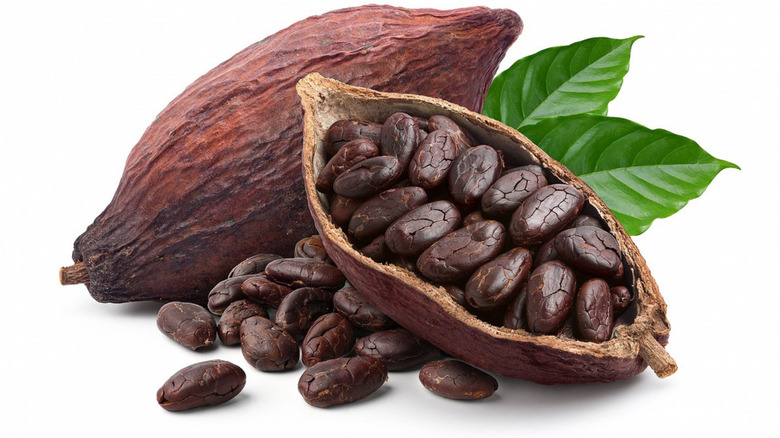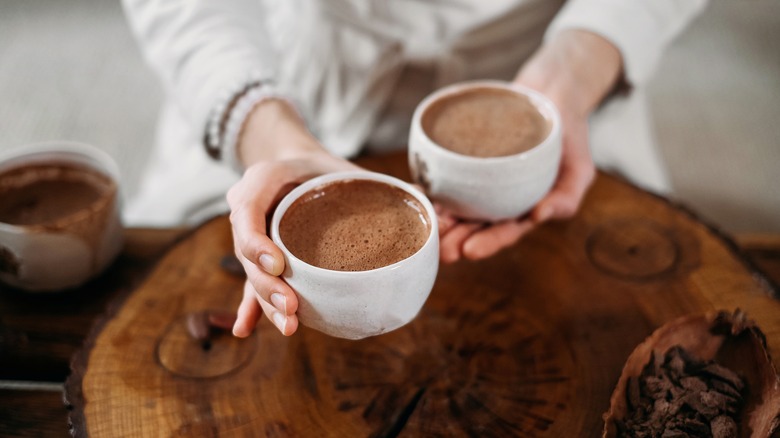Here's Why Cacao Beans Taste Different In Every Country
There are endless ways to enjoy the delights of chocolate in all of its heavenly forms. Whether you love sprinkling it into your favorite desserts, dipping fresh fruit into it, or sneaking a handful of chocolate chips out of the pantry, chocolate can make anyone's day a little sweeter. If you fancy yourself something of a connoisseur, you might have a taste for cacao nibs, cacao powder, or other variations of chocolate in its raw form.
Cacao is often used as a healthier alternative to chocolate in homemade treats, or sprinkled into smoothies, dips, drizzles, and granola. The amount of antioxidants packed into these tiny beans are what makes cacao a true superfood historically used for medicinal purposes by the Aztecs. Depending on where your cacao is grown and harvested, you might notice brands that you've tried have a different flavor profile and aroma. It can be puzzling. There are many differences between cacao and cocoa, but if cacao is chocolate in its natural state without any additives, shouldn't all cacao taste the same? Not necessarily.
The taste of cacao can be earthy, bitter, nutty, or take on sweeter undertones, and this is determined by an environmental factor called terroir. Even separate regions within the same country can produce unique cacao flavors, which unlocks exciting possibilities for craft chocolate makers all over the world.
Cacao absorbs flavor from the region's soil
One of the most important aspects in the world of bean-to-bar chocolate is knowing where the cacao is sourced from. Andrew Black, a chocolatier at MAST Chocolate, explains, "Where the region is, what grows around it, the nutrients in the soil ... that all determines what the cacao tastes like." A region's terroir is also a known influencer on the flavor notes of wine, so it makes sense that coffee and cacao beans would absorb the aromas and taste from their surroundings. Africa is home to 70% of the world's cacao beans, but many other parts of the world, like Mexico, Papa New Guinea, Venezuela, Vietnam, and Peru, are also all big on cacao production.
Madagascar's cacao is popular due to its fruity taste, which is attributed to the island's small size and tropical fruits that share its soil. That same fruity essence can be found in cacao sourced from other regions near the equator, like Brazil, Peru, and Hawaii. In Papa New Guinea, where the rainy climate keeps the soil ultra fertile, cacao growers need to dry beans using a wood-fire process, which results in a smoky flavor. Southeast Asia tends to produce beans that taste a bit spiced, whereas in Tanzania cacao tastes a little like toasted nuts and have higher fat levels. The list goes on! Check the label on your next cacao purchase to learn about its origin and see what subtle flavors you can pick up.

